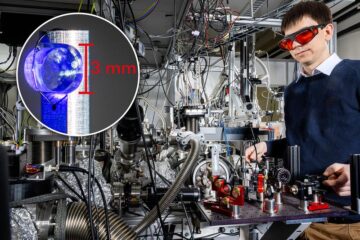Stoned sea-squirts

The psychoactive ingredient of the drug cannabis exerts its effects on the human brain by activating proteins known as cannabinoid receptors. Dr. Maurice Elphick of Queen Mary, University of London has uncovered the first evidence that cannabinoid receptors may not be unique to humans and other vertebrates.
The genome of the sea- squirt was recently sequenced, revealing a cannabinoid receptor gene in an invertebrate for the first time. This means that these receptors were present in the common ancestor of the chordates, much further back on the evolutionary timescale than previously thought.
As Dr. Elphick will report on Thursday 1st April 2004 at the annual SEB meeting in Edinburgh [session A1.7], the sea-squirt cannabinoid receptor gene is expressed in tissues outside the nervous system, raising interesting questions about the functions of this evolutionarily conserved signalling system.
Evolutionary biologists are interested in how the cannabinoid system evolved and how it works in different animals. Dr. Elphick is currently working on the functions of the cannabinoid receptor, to relate what is happening at a molecular level with the physiological effects. He has already established that the cannabinoid system is a fundamental signalling system in the central nervous system of vertebrates, where it plays a role in movement, pain, and learning and memory. In invertebrates such as the sea-squirt, however, the system may have very different functions, perhaps indicating how and why the system evolved in the first place.
Media Contact
More Information:
http://www.sebiology.org/Meetings/pageview.asp?S=2&mid=21All latest news from the category: Life Sciences and Chemistry
Articles and reports from the Life Sciences and chemistry area deal with applied and basic research into modern biology, chemistry and human medicine.
Valuable information can be found on a range of life sciences fields including bacteriology, biochemistry, bionics, bioinformatics, biophysics, biotechnology, genetics, geobotany, human biology, marine biology, microbiology, molecular biology, cellular biology, zoology, bioinorganic chemistry, microchemistry and environmental chemistry.
Newest articles

Biomarkers identified for successful treatment of bone marrow tumours
CAR T cell therapy has proven effective in treating various haematological cancers. However, not all patients respond equally well to treatment. In a recent clinical study, researchers from the University…

She deciphers how tomato roots communicate
Ora Hazak has always been fascinated by plants and is studying the signals that roots send to the rest of the organism. She aims to understand this communication in order…

Laser excitation of a nucleus
A long-awaited breakthrough opens the door to a new type of atomic clock and the investigation of fundamental questions in physics. After decades of investigation, researchers made an extraordinary quantum…





















